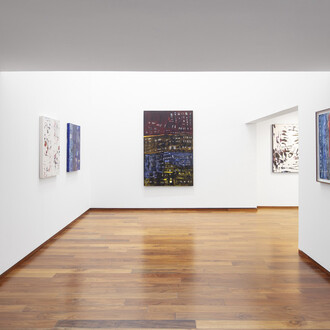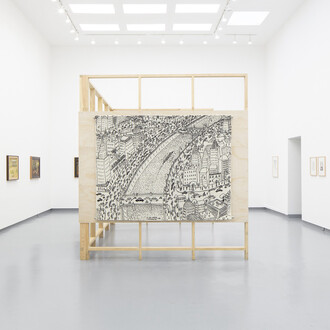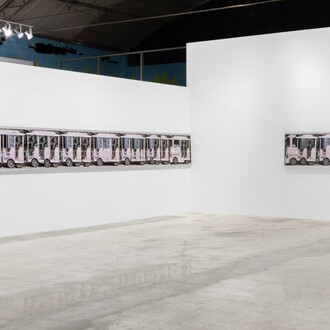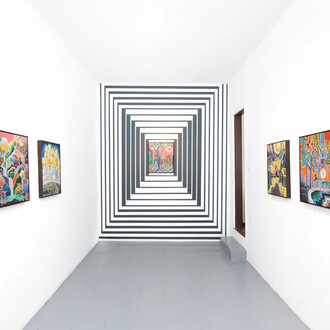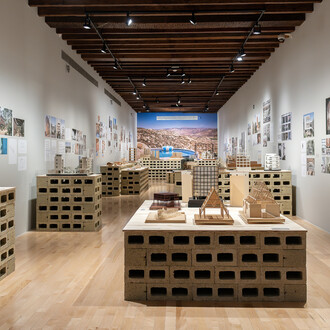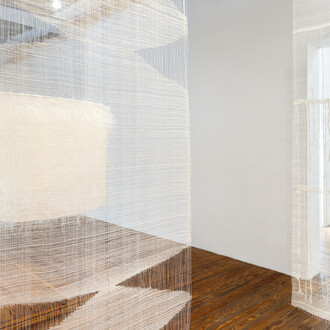Recollection unites works of artists with whom I collaborate today and of those of whom I have collaborated with in the past. It also draws relations between art works or artists known to me for longer, but which have so far only been embedded in my mind. The exhibition is based on personal experiences that partly reach back to my curatorial practices from the 90s and it aims to present a field of open poetic and visual proposals.
Recollection brings together 29 artists and their works: Carlos Bunga – Tobias Putrih, Attila Csörgő – Alexander Gutke, Jimmie Durham – Ivan Kožarić, Leif Elggren – Yuri Leiderman, Marcius Galan – Goran Petercol, Ion Grigorescu – Jochen Lempert, Herbert Hinteregger – Anne Neukamp, IRWIN group – Kazimir Malevič 1985, Julije Knifer – Hélio Oiticica, Mark Manders – Francisco Tropa, Marzena Nowak – Anna Virnich, Gabriel Orozco – Ariel Schlesinger, Goran Trbuljak – Goran Trbuljak.
The structure of the exhibition is conceived of as a series of duets juxtaposing pairs of artists and their work. With the exception of Goran Trbuljak, in which two works by the same artist are paired with each other—a work from the 70s with the artist’s family name that is as an early example of the notion of branding in art juxtaposed with a work in which Trbuljak tries to match his name with the name of a plant named trbulja (water dropwort in English), by arguing in a letter to botanists to add the last letter K to the plant’s name. Another similar deviation is the pairing of a collective work of the five members of group IRWIN with works by an anonymous author signing his/her works with ‘Kazimir Malevič 1985’. Taking these duets as a structural starting point, the visual outcome of the exhibition is expected to be one of many relations and referential layers across the various pairs, leading from duets to a poly-vocal orchestra.
However, unfulfilled aesthetic desires, which I started to gather right after my first journey to Mexico in 1990—a several weeks long trip before the beginning of my studies during which I became better acquainted with visual arts—come now to my mind. I am thinking, for instance, of works by Ljubov Popova and Giorgio Morandi; incredibly beautiful stone sculptures of the so-called International Style from around 1400 AD from Central Europe; geometric ornaments (göls) of antique Turkmen carpets; or of a mysterious and elegantly elaborate slender Etruscan sculpture of a boy, made probably 2,500 years ago; to name a few other visual memories from after the summer of 1990. I recall the cold fall of that year and the feeling of being thrown back as a young man to my West-German surroundings, while desperately missing the smiling faces I was constantly embraced with during my Mexican stay. Recollection is my first return to Mexico.
Recollection is also about strategies of marketing particular works and their values, which derive from my personal experience as an art dealer. The exhibition therefore connects strong aspirations of a curator, a collector, and an observer, with those of a gallerist. If one might miss in this exhibition an explicit inclusion of themes such as gender, sex, politics, economics… This does not mean that they are not present, just that they exist under the skin. If someone draws a line on paper, she or he might leave a strong impact also on other aspects of life, so that even a simple line on paper touches upon our fundamental human conditions. The patterns and forms in Recollection, are thereby equally about memories in life.





